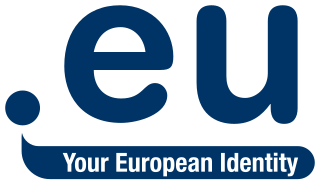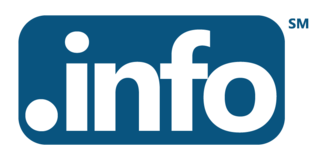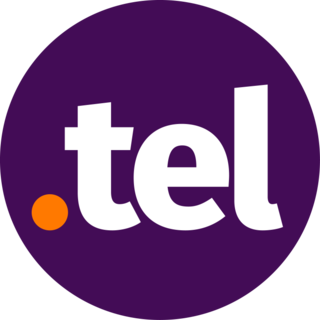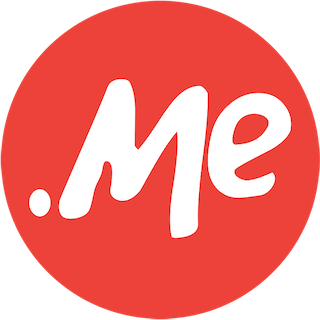Related Research Articles

.eu is the country code top-level domain (ccTLD) for the European Union (EU). Launched on 7 December 2005, the domain is available for any person, company or organization based in the European Union. This was extended to the European Economic Area in 2014, after the regulation was incorporated into the EEA Agreement, and hence is also available for any person, company or organization based in Iceland, Liechtenstein and Norway. The TLD is administered by EURid, a consortium originally consisting of the national ccTLD registry operators of Belgium, Sweden, and Italy, joined later by the national registry operator of the Czech Republic. Trademark owners were able to submit registrations through a sunrise period, in an effort to prevent cybersquatting. Full registration started on 7 April 2006.

.info is a generic top-level domain (gTLD) in the Domain Name System (DNS) of the Internet. The name is derived from information, although registration requirements do not prescribe any particular purpose.
A domain name registrar is a company that manages the reservation of Internet domain names. A domain name registrar must be accredited by a generic top-level domain (gTLD) registry or a country code top-level domain (ccTLD) registry. A registrar operates in accordance with the guidelines of the designated domain name registries.
Domain name speculation, popular as domaining in professional jargon, is the practice of identifying and registering or acquiring generic Internet domain names as an investment with the intent of selling them later for a profit.

.co is the Internet country code top-level domain (ccTLD) assigned to Colombia.
.kr is the Internet country code top-level domain (ccTLD) for the Republic of Korea. Registrations are processed via registration agents.

The domain name .tel is a top-level domain (TLD) in the Domain Name System (DNS) of the Internet. It was approved by ICANN as a sponsored top-level domain, and is operated by Telnic. Telnic announced in January 2011 that over 300,000 domains had been registered since the start of general availability on 24 March 2009. A substantial drop of mostly IDN .tel's occurred at the beginning of 2014. The total number of registered websites under .tel as of 9 October 2023 is approximately 43,227.

The top-level domain .asia is the officially designated regional domain in the Internet for Asia and the Pacific. It is a sponsored generic top-level-domain (gTLD) operated by the DotAsia Organisation Ltd. The domain is open to companies, individuals and organisations that have a connection to the region. Asia domains can be seen and used by international and Asian businesses; regional conferences and symposiums; as well as Asian artists and celebrities.

.me is the Internet country code top-level domain (ccTLD) for Montenegro.

.sx is the country code top-level domain (ccTLD) in the Domain Name System of the Internet for Sint Maarten.

.biz is a generic top-level domain (gTLD) in the Domain Name System of the Internet. It is intended for registration of domains to be used by businesses. The name is a phonetic spelling of the first syllable of business.
A landrush period is the time during which domain names are available for registration, usually to a closed group, to entities that do not own a trademark in the name they wish to register, for example generic terms like loan or car, and thus would not qualify for registration during the sunrise period. Orders may or may not be treated on a first-come-first-served basis. This period follows the sunrise period just after the launch of a new top-level domain or second-level domain during which, for example, owners of trademarks may register a domain name containing the owned mark, but a landrush period precedes a period of general availability, when any qualifying entity can register any name on a first come first-served basis.

.wiki is a top-level domain name. It was proposed in ICANN's New generic top-level domain (gTLD) Program, and became available to the general public on May 26, 2014. Top Level Design is the domain name registry for the string.
The domain name Dot Chinese Website (.中文网) is a new generic top-level domain (gTLD) in the Domain Name System (DNS) of the Internet. Dot Chinese Website is among many listed top level domains. Created along with the partner domain name Dot Chinese Online (.在线) by TLD Registry through Internet Corporation for Assigned Numbers and Names (ICANN)’s new gTLD program launched in April 28, 2014. TLD Registry was founded in June 2008 in Finland with the mission to create essential new Chinese TLDs - intended mainly towards a Chinese-speaking audience. Because it is displayed in a simplified Chinese character language specific script, Dot Chinese Website is known as an Internationalized Domain Name (IDNs).

The Trademark Clearinghouse is a database of validated and registered trademarks established by ICANN to assist trademark holders prevent infringing behavior in the Domain Name System. In combination with the Uniform Rapid Suspension System (URS), it is the second significant attempt by ICANN to handle the "Trademark Dilemma". The first attempt was the Uniform Domain-Name Dispute-Resolution Policy.
.college is a generic-top-level domain (gTLD) used in the domain name system of the Internet. It was delegated to the Root Zone of the DNS on 10 April 2014, completing the successful application for the string. The .college back-end registry operations are provided by CentralNic. Unlike .edu, .college is open for registration to the general public.

Uniregistry is a large retail domain name registrar and web services provider; as well as a domain name registry that administers generic top-level domains. In February 2013, the related company Uniregistrar Corporation became an ICANN-accredited registrar and launched under the licensed Uniregistry brand name in 2014. Uniregistry's acquisition by GoDaddy was announced in February 2020.

.guru is a generic top-level domain (gTLD) owned by Donuts. It was delegated on 6 November 2013.
.sexy is a generic top-level domain owned by Uniregistry. Delegated on 14 November 2013, .sexy was the subject of controversy due to opposition from the government of Saudi Arabia and privacy concerns regarding registering domains.

.monster is a generic top-level domain (gTLD) owned by XYZ.com. Originally delegated in 2014 by the employment website Monster.com as a brand-specific domain name, .monster was acquired by XYZ in 2019 as a general domain.
References
- ↑ Minds + Machines Sunrise Period
- ↑ .eu Sunrise Facts
- ↑ Minds + Machines Landrush Period
- ↑ First Come First Served Sunrise Periods On the Cards, DomainIncite Retrieved 24 Jan 2014
- ↑ The Trademark Clearinghouse TMCH
- ↑ Sunrise Domain Name Registration
- ↑ Trademark Claims services
- ↑ XXX Sunrise Auctions Delayed After 80k Applications, DomainIncite.com